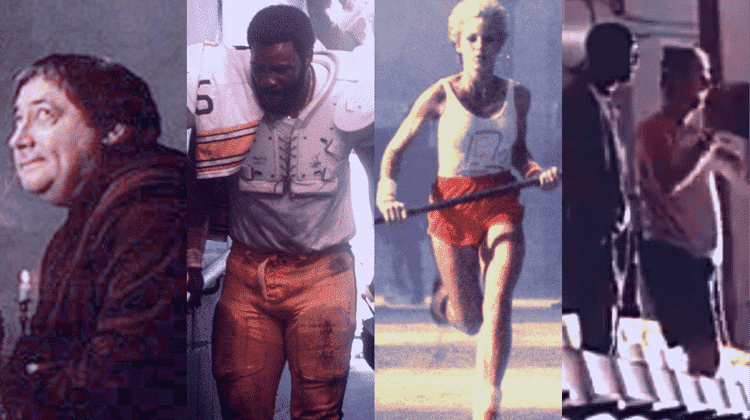4 Superbowl Ads That Will Improve Your PPC Campaigns
by Jenny Hatch • February 1, 2016
Superbowl ads are legendary. We all have our favorites from over the years—Coke, Budweiser, Doritos, GoDaddy, Apple, etc—for the way they made us feel, customer loyalty to the product, or just because.
Buckle up! We’re taking a 40-year journey through the top Superbowl ads to discover the secret to customer engagement—and how to apply them to PPC marketing.
1. Coca-Cola’s Superbowl Ad
First up? Mean Joe Green and Coca-Cola Classic in 1979.
In this ad, Coca Cola does a great job of complementing the customer (Joe Green), giving him a taste of the product for free, and offering their product as relief.
So, how do we apply these lessons to PPC?
Compliment the Customer
Flattery goes a long way in attracting customers.
Wordstream published a post where they tested two new ad copies against their control ad—their current top performing ad. The winning ad had a 38% increase over the control ad.
What did the winning ad copy do? It flattered and promoted saying, “You Own It. Rock It Out, Curvy Girl! 40% Off Select Styles”.
Offer Something for Free
Everyone loves free stuff. It might be because you’re walking away with something that’s valued at more than free or it might be because you get to try something out before you commit to it by purchasing it.
Regardless, using a call to action in ad copy referencing something free—a free guide, free shipping, free trial, free consultation—attracts customers.
If You Can’t Solve It, Relieve It!
Unfortunately, Coca-Cola is not the cure for football injuries, bad break-ups, or the key to a happy life. Your product might not be either.
But, it might relieve the stress of work, the mundaneness of commuting, or ease the burden of filing taxes. Whatever your product does, maximize the relief you can offer.
During Winter Storm Jonas earlier in January 2016, many companies took to social media to help people make the most of the time stuck at home by encouraging catching-up on their favorite shows.
The result? Online video streaming services reported between a 38-56% spike in viewership during the storm.
2. Apple’s Superbowl Ad
Next up? Apple’s 1984 ad introducing the Macintosh computer.
Apple’s focus on one product helps the product stand out in this iconic commercial.
Lessons learned from the commercial:
Stand Out
Its easy to be like everyone else and do what everyone else is doing. When one person dares to stand out from everyone else, who do you notice? The one that stands out.
Ad fatigue happens when all the text ads look the same. One way to avoid it is to make your ads stand out from everyone else by including a # or 🙂 in your ads.
For example, since 2014 Bud Light and Toyota have been using hashtags like #UpForWhatever or #Unbornify in their text ads. It helps them stand apart from competitors and unifies all marketing by including the hashtag across all mediums.
Focus On One Product
Choosing to focus on one product rather than many products is a great way to generate excitement and boost sales by letting customers know exactly what products you have.
In PPC, your text ads can focus on just one product by using dynamic keyword insertion to dynamically switch out the exact product the customer is searching for. It’s a great way to be relevant without the work of creating separate ads for each product.
3. Xerox’s Monk Superbowl Ad
Third, we have Xerox’s 1976 Monk’s ad.
Xerox solved a problem that many, but not all people knew they had at this time. Doing so took Xerox from a specialty name to a household name.
Lesson learned:
Identify and Solve a Problem
You can’t solve a problem until a problem has been identified.
Xerox had been around for 70 years when this Superbowl ad was created. Their products were used across the country by printers, but this new product doubled the speed of previous copiers.
This commercial helped Xerox become a household name by showing the public why they needed the Xerox 9200.
With PPC ads, you can bid on often Googled questions that your product answers and even include the question and answer in your PPC ads. Your product just might be the answer they are looking for!
4. McDonald’s Superbowl Ad
Finally, let’s take a look at McDonald’s 1993 Larry Bird versus Michael Jordan ad:
https://www.youtube.com/watch?v=_oACRt-Qp-s
This classic McDonald’s commercial took advantage of the popularity of two pop culture icons we loved and ignited a fear of missing out on a product to create a riveting ad.
Lessons learned:
Create a Fear of Missing Out
No one wants to be the one without a burger watching someone else eat.
When you create urgency in a customers’ mind that they need something now before it’s gone, you capitalize on the short attention span of the customer and minimize the risk of them browsing away and forgetting you.
Ad customizers tap into this psychological phenomenon by using countdowns, limited product availability, etc.
Involve Pop Culture
When involving pop culture, you need to do it wisely to ensure you don’t offend or alienate customers accidentally. If your pop culture reference isn’t on point, it will backfire.
You usually don’t have a ton of room (or budget) to get a celebrity reference in PPC, but, you can use pop culture references to make your ads more effective.
For example, if your company targets teenagers you could use slang terms they are familiar with to grab their attention with your PPC ads.
Conclusion
One of the best ways to get new ideas for engaging customers is to learn from what other companies are doing.
Whether it’s a skillful use of flattery, pop culture, solving or eliminating problems, igniting a fear of missing out or some other tactic, Superbowl ads (and other great ads) are a great way to learn what works!
What marketing tactics have you seen used in Superbowl ads? What is your favorite Superbowl ad? and who do you want to win this Sunday? Comment below!





